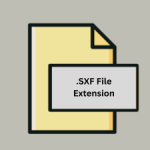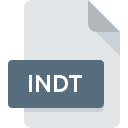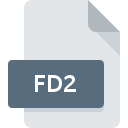.TFRD File Extension

Tape Image Format Requirements Document
| Developer | National Geospatial-Intelligence Agency |
| Popularity | |
| Category | GIS Files |
| Format | .TFRD |
| Cross Platform | Update Soon |
What is an TFRD file?
The .TFRD file extension stands for Tape Image Format Requirements Document. These files are used to define and document the requirements for tape image formats, typically in the context of data storage, backup, and archival systems. They provide a structured format for specifying the attributes, behaviors, and constraints of tape image formats.
More Information.
The initial purpose of the .TFRD file was to serve as a comprehensive requirements document for developers and engineers working with tape image formats. It helped ensure that all stakeholders had a clear understanding of the format specifications, promoting consistency and compatibility across different systems and implementations.
Origin Of This File.
The .TFRD file extension likely originated from the need to standardize the documentation of tape image formats. As data storage technology evolved, the complexity and variety of tape formats increased, necessitating a formal way to capture and communicate the requirements and specifications.
File Structure Technical Specification.
The .TFRD file typically contains structured text, often in a markup or documentation language such as XML, JSON, or a custom format.
Key components of a .TFRD file might include:
- Header: Metadata about the document, such as version, author, and date.
- Introduction: Overview and purpose of the document.
- Requirements: Detailed specifications, including data structures, encoding methods, error handling, and compliance criteria.
- Diagrams: Visual representations of data flows, structures, or processes.
- Appendices: Additional information, references, or examples.
How to Convert the File?
Windows
- Using a Text Editor or IDE:
- Open the .TFRD file in a text editor like Notepad++ or an IDE like Visual Studio Code.
- Modify the content as needed and save it in the desired format (e.g., .txt, .json, .xml).
- Using Conversion Tools:
- Use tools like Pandoc to convert the .TFRD file to other formats such as HTML, PDF, or DOCX.
- Command example:
pandoc input.tfrd -o output.html
- Custom Scripts:
- Write a custom script in Python or another language to parse the .TFRD file and convert it to the desired format.
Linux
- Using a Text Editor or IDE:
- Open the .TFRD file in a text editor like Gedit or an IDE like Visual Studio Code.
- Modify and save it in the desired format.
- Using Command-Line Tools:
- Use tools like Pandoc for conversion.
- Command example:
pandoc input.tfrd -o output.md
- Custom Scripts:
- Write a custom script in Bash, Python, or another language to handle the conversion.
Mac
- Using a Text Editor or IDE:
- Open the .TFRD file in a text editor like TextEdit or an IDE like Xcode.
- Save it in the desired format after making necessary modifications.
- Using Conversion Tools:
- Use Pandoc to convert the file.
- Command example:
pandoc input.tfrd -o output.docx
- Custom Scripts:
- Develop a custom script in a language like Python to perform the conversion.
Android
- Using a Text Editor App:
- Open the .TFRD file in a text editor app like QuickEdit.
- Edit and save it in the desired format if supported.
- Using Conversion Apps:
- Use file conversion apps like File Converter to convert the .TFRD file to other formats.
- Cloud Services:
- Upload the .TFRD file to a cloud service like Google Drive, then use associated apps to convert the file.
iOS
- Using a Text Editor App:
- Open the .TFRD file in a text editor app like Textastic.
- Save it in the desired format after editing.
- Using Conversion Apps:
- Use file conversion apps like The Document Converter to handle the conversion.
- Cloud Services:
- Utilize cloud services like iCloud Drive and associated apps for conversion.
Other Platforms
- Web-Based Editors and Converters:
- Use web-based editors like GitHub Gist to open and edit the file.
- Use online conversion tools like Zamzar or Online-Convert to convert the .TFRD file to the desired format.
- Custom Online Scripts:
- Develop and use custom scripts hosted on platforms like Repl.it to perform the conversion directly in the browser.
Advantages And Disadvantages.
Advantages:
- Standardization: Ensures consistent documentation of tape image formats.
- Clarity: Provides clear, structured information for developers and engineers.
- Compatibility: Promotes interoperability between different systems and implementations.
Disadvantages:
- Complexity: Can be complex to create and maintain, especially for intricate formats.
- Specificity: May require frequent updates to remain relevant as technology evolves.
How to Open TFRD?
Open In Windows
- Text Editors: Notepad, Notepad++, Sublime Text.
- IDE/Code Editors: Visual Studio Code, Eclipse.
- Documentation Tools: Doxygen, Sphinx (if .TFRD uses a compatible format).
Open In Linux
- Text Editors: Gedit, Nano, Vim.
- IDE/Code Editors: Visual Studio Code, Eclipse.
- Documentation Tools: Doxygen, Sphinx.
Open In MAC
- Text Editors: TextEdit, Sublime Text, Atom.
- IDE/Code Editors: Visual Studio Code, Xcode.
- Documentation Tools: Doxygen, Sphinx.
Open In Android
- Text Editors: QuickEdit, Jota Text Editor.
- Code Editors: AIDE, Dcoder.
Open In IOS
- Text Editors: Textastic, Kodex.
- Code Editors: Koder, Buffer Editor.
Open in Others
Web Editors: GitHub Gist, CodePen, Repl.it.













